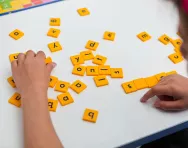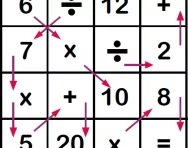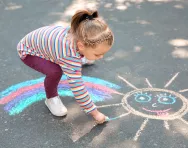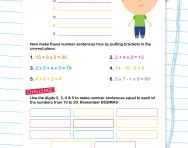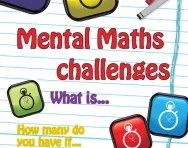Important update from TheSchoolRun
For the past 13 years, TheSchoolRun has been run by a small team of mums working from home, dedicated to providing quality educational resources to primary school parents. Unfortunately, rising supplier costs and falling revenue have made it impossible for us to continue operating, and we’ve had to make the difficult decision to close. The good news: We’ve arranged for another educational provider to take over many of our resources. These will be hosted on a new portal, where the content will be updated and expanded to support your child’s learning.
What this means for subscribers:
- Your subscription is still active, and for now, you can keep using the website as normal — just log in with your usual details to access all our articles and resources*.
- In a few months, all resources will move to the new portal. You’ll continue to have access there until your subscription ends. We’ll send you full details nearer the time.
- As a thank you for your support, we’ll also be sending you 16 primary school eBooks (worth £108.84) to download and keep.
A few changes to be aware of:
- The Learning Journey weekly email has ended, but your child’s plan will still be updated on your dashboard each Monday. Just log in to see the recommended worksheets.
- The 11+ weekly emails have now ended. We sent you all the remaining emails in the series at the end of March — please check your inbox (and spam folder) if you haven’t seen them. You can also follow the full programme here: 11+ Learning Journey.
If you have any questions, please contact us at [email protected]. Thank you for being part of our journey it’s been a privilege to support your family’s learning.
*If you need to reset your password, it will still work as usual. Please check your spam folder if the reset email doesn’t appear in your inbox.
6 screen-free word and number games for kids
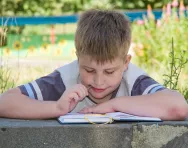
Word game: Diamonds
A brilliant one-player vocabulary challenge.
Players: 1 Difficulty: Hard Time: 10 minutes
What you'll need: Pencil and paper (or mini whiteboard and pens).
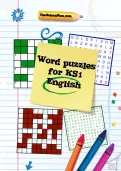
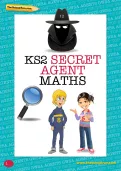
Claim four puzzle packs!
- Word Puzzle Packs
- Numeracy Puzzle Packs
- Challenging and exciting | Boost key skills
HOW TO PLAY
- Start by writing a two-letter word at the centre-top of your page. Here are some to get you started: IF, NO, AN, BY, UP, BE.
- Now you must find a three-letter word that begins with the last letter of your two-letter word. Write that just below, branching outwards like a diamond.
- Next, you would find a four-letter word that begins with the last letter of your three-letter word, and so on.
- You could challenge yourself to make it to ten letters, or even push for higher.
- You could turn back at ten letters and shrink to nine, then eight, all the way back to two.
If you get stuck, you can decide to go back and swap an earlier word, or start again.
If you think of a word but it’s a little too short, see if you can add a suffix (‘ED’, ‘ING’, ‘LY’.) Having said that, watch out for words that end in Y. It makes things a little tricky...
Level up!
Try saying the words, in order, as if they’re a story. How much emotion and meaning can you convey with a list of nonsense? Alternatively, try writing a story containing all of the words that appeared in your list.
Number game: Secret number
Use questions to find the secret number.
Players: 2+ Difficulty: Medium Time: 10 minutes
What you'll need: Pencil and paper (optional).
HOW TO PLAY
One player will pick a random number between 1 and 100. It is the other’s job to guess it, but only by using a series of maths-related yes/no questions. You may use the question suggestions below, but only one question using each suggestion. (Otherwise, the first one repeated enough times would always find the answer.)
- Is it between ___ ?
- Is it greater than ___ ?
- Is it less than ___ ?
- Is it in the ___ times table?
- Does it divide by ___ ?
- Is it a prime number?
- Does it contain the digit ___ ?
- Are the digits the same as each other?
- Is the digit in the tens column greater than the units column?
- When rounded to the nearest ten, is it ___ ?
- Is it an odd number?
- Is it a factor of ___ ?
- Does it begin with ___ ?
- Does it end in ___ ?
If you get to the end of these questions and still don’t have the answer, it may be time to make up your own styles of questions. Just remember not to repeat the same one twice. Once you’ve guessed the number, it’s time to switch and try another round with different roles.
Tips: As soon as you’ve rounded the possible numbers down to something small, say, under twenty possibilities, write them down and begin to shave off the wrong ones. You can use a number square to cross off all the impossible numbers. Playing this in your head is possible, but makes it more of a memory game than anything.
Level up!
The number doesn’t have to be below 100 if you agree on this beforehand. Just get ready for a long game!
Word game: Nymphabet
A word battle where the alphabet is your weapon.
Players: 2+ Difficulty: Medium Time: 5 minutes per round
What you'll need: Pencil and paper
HOW TO PLAY
A tactical countdown game where you’re trying to be the one to make the final move. So if strategy gets you going, read up about a thing called combinatorial game theory. If not, let’s play a game!
- On a sheet of paper, write out the alphabet in a rough circle, in order. Player 1 should choose a letter and circle it, and then the game begins.
- Player 2 moves first, writing down a word that contains the circled letter and, ideally, the next few letters from further along the alphabet. They can come anywhere in the word but they must be in the correct alphabetical order. Let’s say Player 1 circled ‘N’. Player 2 wants a word that contains N (pretty easy so far) and maybe O and P after it. Nincompoop! Because Player 2 has used the letters N, O and P in order, he can cross out those letters, and play moves back to Player 1, who starts on the next letter in the alphabet circle.
- Each player takes it in turn to write down letters that progress the alphabet, in order, without skipping letters. Remember, you can jump forward in a word to find the next letter, but you can never move backwards.
- Going through Z and back round to A and onwards, the winner is the player who returns to the starting letter and uses it in a word, wins the round.
- Next round, Player 2 writes another alphabet, picks a whole new letter and play begins again. If you play a few rounds of this game, try to never repeat the same word. If you’re writing them all down, it’s easy to check. If you do repeat a word, undo it and try another.
- You can use as many sequential alphabet letters as you like in a word, but you might not want to. Remember, there are no points for finishing quickly; you just want to be the one to finish.
EXAMPLE
Player 1 circles J.
Player 2 writes ‘Jackal’ and crosses off J, K and L.
Player 1 writes ‘Mnemonic’ and crosses off M, N and O.
Player 2 writes ‘Equip’. Even though this contains a P and a Q, he can only cross off the Q if it comes after the P. So he just crosses off P.
And so on.
Level up!
If you do want a one-player challenge, start with any letter of the alphabet and try to get back to that letter in as few words as possible. You could even work as a pair or a group to find the shortest sequence.
Number game: Double it!
A brain exercise that only ends when you get a headache.
Players: 1 Difficulty: Easy Time: 30 minutes
What you'll need: One fresh brain
HOW TO PLAY
There was an exceedingly popular app a few years ago called ‘2048’. It involved sliding tiles around until they matched, merged and doubled, with the intention of reaching 2048. It was beautiful and addictive, and best of all, people have been been playing this long before smartphones. Here’s how.
- Start with the number 1. Nice, isn’t it? Double it. 2. Double it again. 4. Keep doubling. 8... 16... Double it. 32.
- Fill your head with numbers. Use fingers and thumbs and teeth. Double the teeth.
- Keep track of those digits and double them. You’ll recognise the first few, but after a while you’ll be well out of your comfort zone.
- It doesn’t matter if you go wrong, just remember the result and double it again.
- The game ends when you lose count. Write down the best you did and try to beat it next time.
- This game is obviously meant to be played in your head, but if you want to do it on paper, that’s also fine. It’ll be a nice way of watching it grow.
If you were to take a piece of paper and fold it in half forty-two times, it would be tall enough to reach the moon. This is the power of multiplying. What starts as tiny increments soon becomes gargantuan, which makes every further step a bigger challenge. It’s why I love this game so much.
Level up!
I wouldn’t try tripling a number (too messy!) but start on three and double that continually. Watch how it hops from odd to even and back again. Isn’t that neat?
If you have two players, double the other player’s number to stay in the game. First to lose track does the washing up!
Word game: Compound fractures
Break words apart and stick them together in this linking game.
Players: 2+ Difficulty: Hard Time: 10 minutes
What you'll need: Pencil and paper (or mini whiteboard and pens).
HOW TO PLAY
- Compound words are words that break into two smaller ones. In this game you’ll say a compound word, like swordfish (or a two-word phrase that always goes together, like ‘fishing rod’), and the other player must take the second part, break it off, and find a word that begins with it.
- Try to keep the chain going for as long as possible. If you want to be competitive then the winner is the last person to say a word that fits, but you can just as easily work together.
- Ignore prefixes and suffixes when finding your links. The rules are as free as you need them to be. This game is calming, slow and great to play during a bit of down-time.
EXAMPLE
Player 1: ‘Scarecrow.’
Player 2: ‘Crow’s foot.’
Player 1: ‘Football.’
Player 2: ‘Ballboy.’
Player 1: ‘Boyfriend.’
Player 2: ‘Friendship.’
Player 1: ‘Ship shape.’
... and so on.
Level up!
Tell a sentence to begin a story containing your compound word. Stress it, so that your opponent knows which one you meant, and then they must add a sentence containing their linking word. Continue until the end of the story.
Number game: Get 1000
Roll a dice, fill a grid, win a game.
Players: 2+ Difficulty: Medium Time: 3 minutes per round
What you'll need: Pencil and paper for each player and a six-sided die.
HOW TO PLAY
This simple maths game requires knowledge of column addition. If you don’t know how to do that, get a child to teach you. They’re experts.
Each player should draw a 3 x 3 grid of boxes, like this.
One player will roll a die nine times. Each time, all players fill the rolled number into one of their boxes; you choose which box to put each number in. Once every box is filled, your grid should look like this:
Now to tally it up. Each row becomes a three-digit number (so the above grid has the numbers 356, 412 and 232). Add them up using column addition, writing the total below. The closest to 1000 wins the round.
Tip: Because everyone gets the same nine numbers to put in their grids, the real skill is in choosing where to put them. Remember that everything in the left-hand column is worth hundreds, everything in the middle is worth tens and everything on the right is worth ones. Being a little too high on the right-hand column might leave you just a couple away from 1000. Being too high in the left column might make you miss by hundreds!
Level up!
You could do the same with a 4 x 4 grid of boxes and a target of 10,000. It’s a little harder, but worth the jump.
More screen-free games to play with the family
If you've enjoyed this extract from BORED? GAMES: 101 Games to Make Everyday More Playful by Ivan Brett (£9.99, Headline Home), invest in the book for 95 more ideas to keep you entertained! The rules are presented in the simplest, most playful form possible, so that you can get started with barely any learning, preparation or resources.

